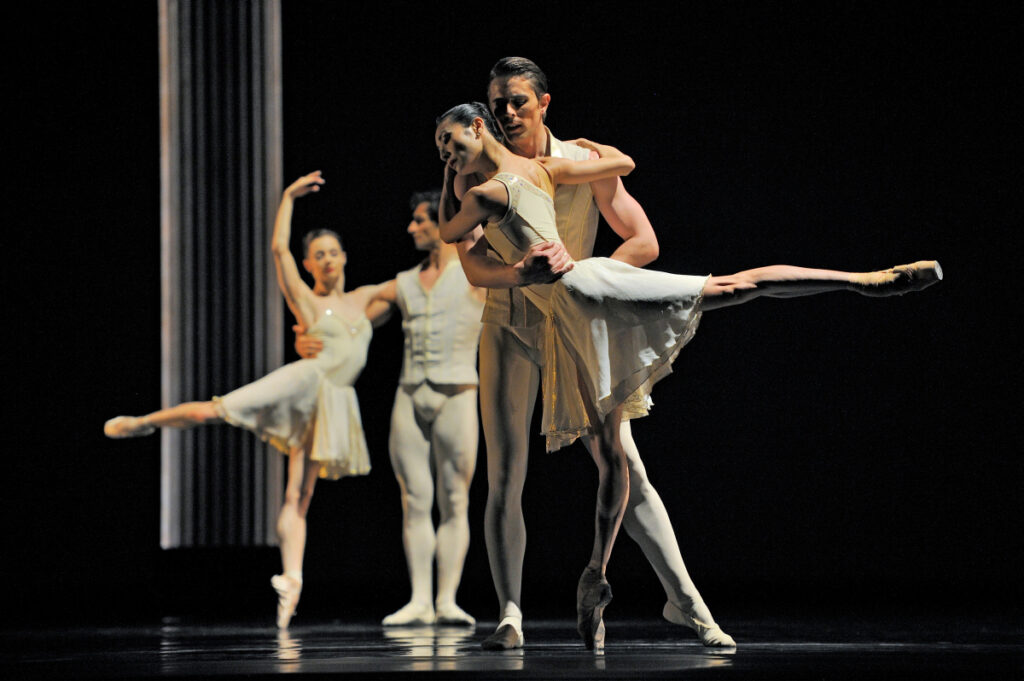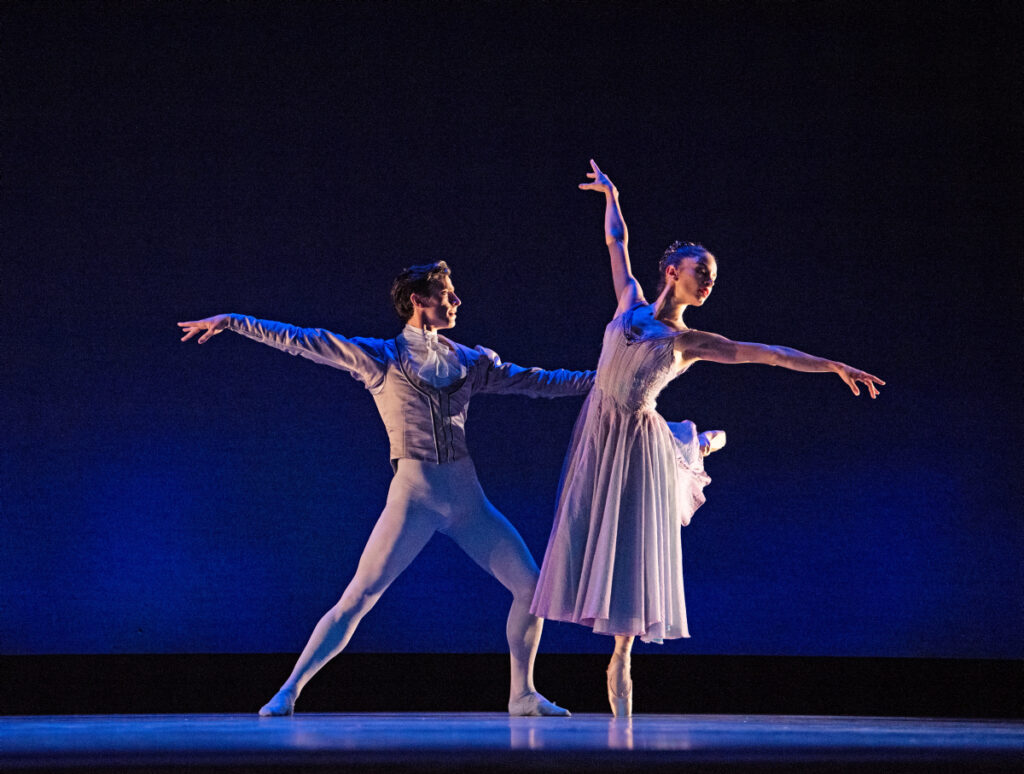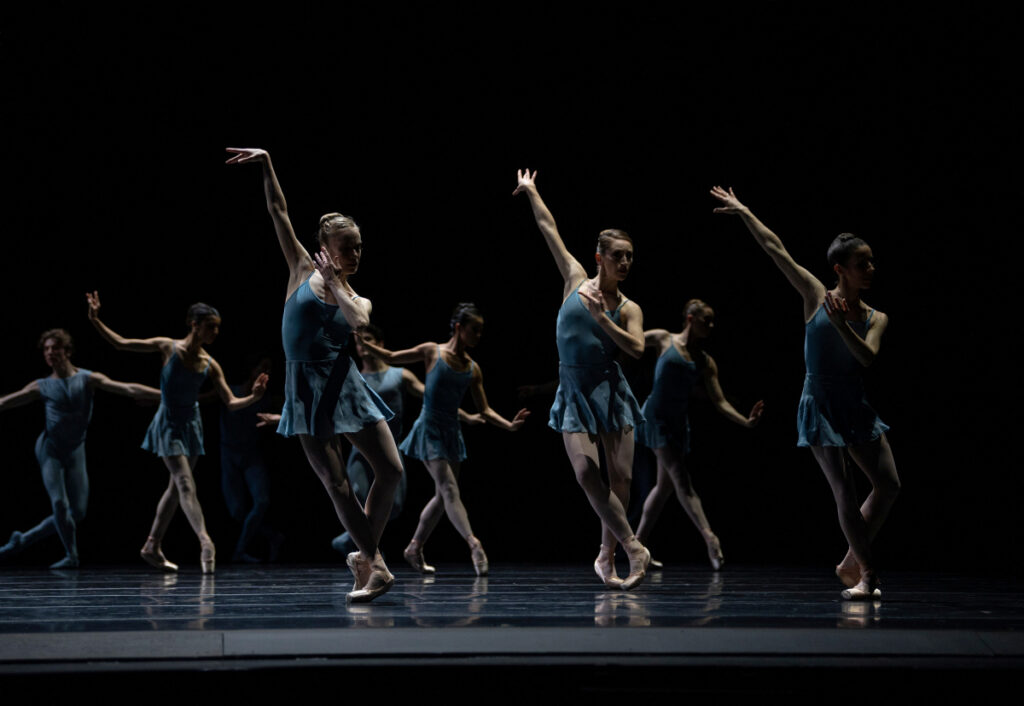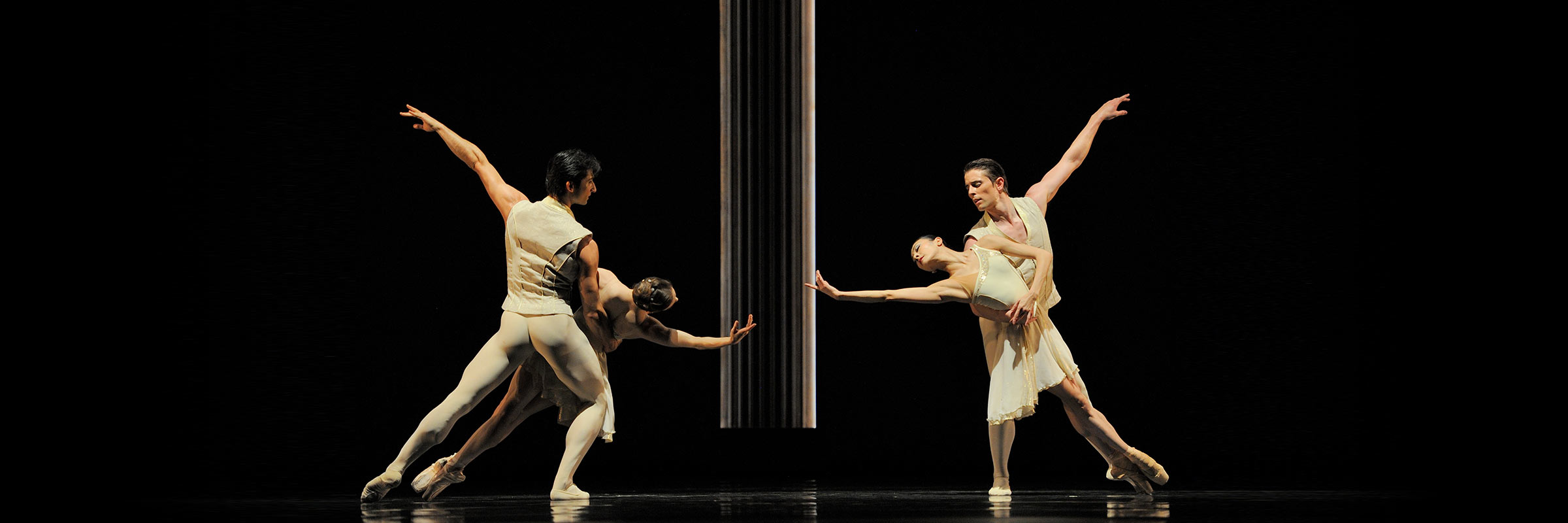Your Ultimate Guide to Program 2
Explore the Alchemy of Artist and Approach
What Is It? A mixed program that explores the marriage of artist and approach, and how that special combination drives contemporary ballet forward. Each choreographer in this triple bill—Helgi Tomasson, Jerome Robbins, and William Forsythe—draws inspiration from different places and choreographs in different ways, building ballets that are distinctive, exquisitive, and timeless.
Who’s It For? Design enthusiasts, lovers of romantic dramas, and those wishing to lose themselves in the evocative music of James Blake.
CAPRICE

What Am I Seeing? Artistic Director and Principal Choreographer Helgi Tomasson’s 2014 neoclassical ballet is an exploration of structure, scale, and contrast. From the choreography and the costumes (cream for the principal couples, deep gold for the corps de ballet) to the set—shifting columns and neon lighting—every element is designed to change your sense of perspective.
What Am I Hearing? Camille Saint-Saëns’ Symphony No. 2 in A minor and the Adagio from Symphony No. 3 in C minor (known as the “organ” symphony, it is here orchestrated for woodwinds). Symphony No. 2’s adagio is shorter than you would expect with a symphony, and the scherzo (the third movement) doesn’t follow the traditional ABA structure by not returning to the theme (A) after the B section. Both of these quirks make Saint-Saëns’ music perfect for Caprice, which plays with your expectations from the moment the curtain rises.
What Should I Look For? As a choreographer, Tomasson’s approach begins with the music and the strengths of the Company. Look for how he moves seamlessly between large groupings and pairs and trios to highlight the dancers. And two adagios means an opportunity to explore the contrasting styles and emotions of two principal couples; one pas de deux is lyrical, the other dramatic.
IN THE NIGHT

What Am I Seeing? One of Tomasson’s mentor Jerome Robbins’ piano ballets, which strip away the sparkling jewels, tutus, and aristocratic characters of classical ballets and focus on ordinary folk. In this follow-up to Dances at a Gathering, Robbins follows three couples at different stages in their relationships.
What Am I Hearing? Polish composer Frédéric Chopin’s Nocturnes Op. 27, No. 1; Op. 55, No. 1 & 2; and Op. 9, No. 2. Chopin popularized and expanded the range and depth of these solo piano salon pieces, infusing them with tension, emotion, and nuance. Listen for when Robbins choreographs with the music and when he pulls against it, and how that impacts the ballet’s storytelling.
What Should I Look For? In the Night is all about the interpersonal and the versatility of that ballet staple, the pas de deux. Look for the relationship between the dancers in each of the three couples—the young lovers, the married pair, and the couple on the verge of splitting apart—and how they portray everything from desire and submission to passion and anger.
BLAKE WORKS I SF BALLET PREMIERE

What Am I Seeing? A contemporary ballet from a choreographer whose relationship with SF Ballet is almost as long as Tomasson’s. Thirty-five years after the premiere of New Sleep at SF Ballet, Blake Works I is the sixth and latest Forsythe work on the Opera House stage. Created for Paris Opera Ballet in 2016, Blake Works I is “a love letter to ballet,” says stager Ayman Harper.
What Am I Hearing? Songs from English singer-songwriter James Blake’s album The Colour in Anything, released in 2016. Blake’s music is hard to categorize into any one genre; it combines pop, soul, dubstep, and electronic elements with a classical training to create a minimalist yet powerful aural landscape.
What Should I Look For? Like the other ballets on Program 2, Blake Works I uses a bare (or mostly bare) stage to showcase the dancers’ movements through the space. This minimalism allows you to see how Forsythe plays with classical ballet steps, extending them and combining them in unusual ways that keep us fascinated. The choreography is complex, physically challenging, and thrilling to watch. And for you balletomanes out there, try and spot Forsythe’s odes to some of ballet’s most iconic choreographic moments.
THIS PRODUCTION WAS PART OF THE 2022 SEASON
Header Image: San Francisco Ballet in Tomasson’s Caprice // © Erik Tomasson








